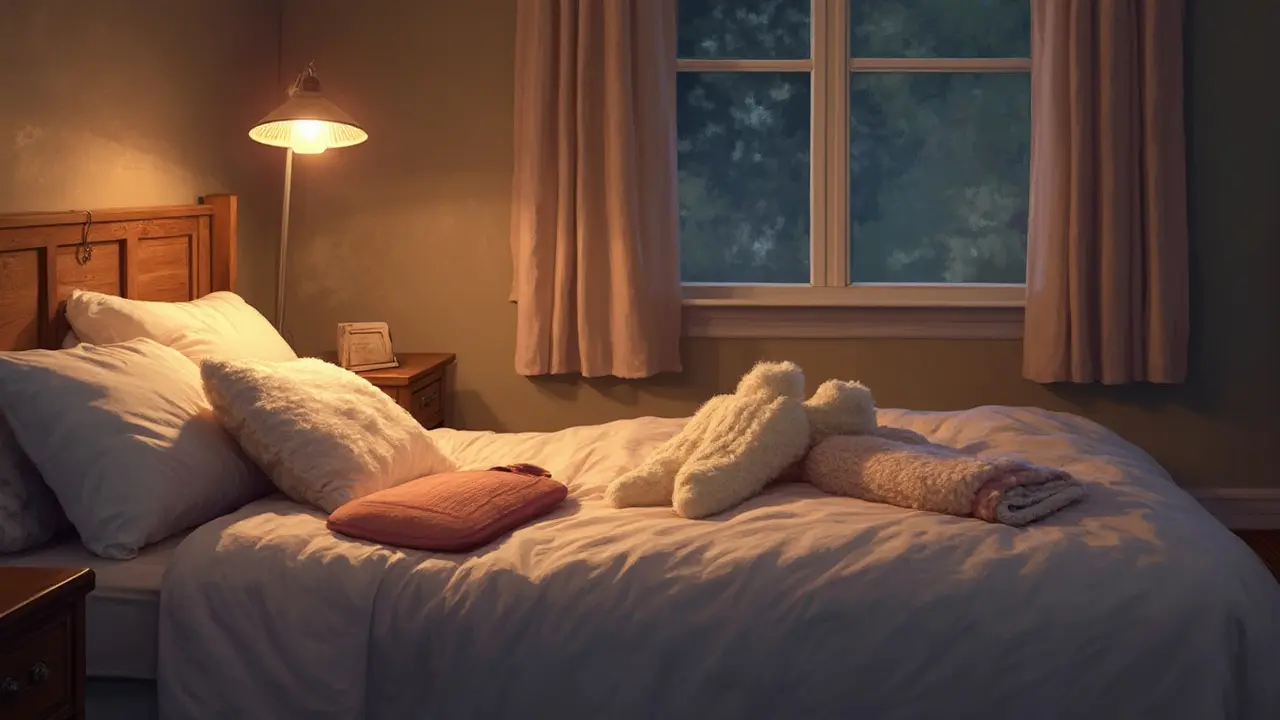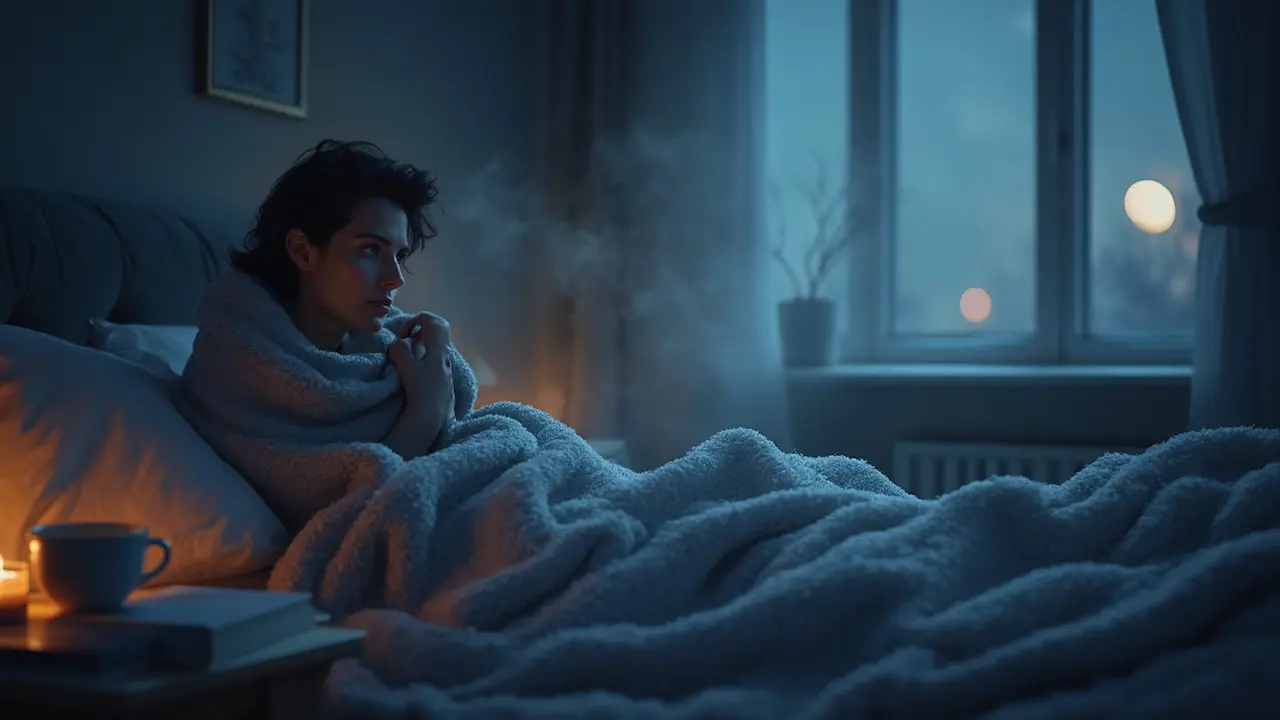You're lying in bed, blankets tucked up to your chin, and suddenly you get this wave of chills running down your body. Not the spooky kind—this is the 'my teeth might chatter' sort. Nighttime chills catch you off guard, even in a room that should be cozy. They mess with your sleep, make you cranky, and sometimes spark that nagging little worry: What if something’s actually wrong? If you get shivers at night, you’re far from alone. According to a 2023 European Sleep Foundation survey, about 18% of adults report waking up cold at least once a week. Tackling why chills hit after sunset—and what to do about it—can change how you sleep and even point you to an underlying problem you hadn’t noticed.
What Actually Causes Nighttime Chills?
The body’s pretty clever at keeping itself at the right temperature, but sometimes it gets thrown off track. Nighttime chills aren't just about a draft sneaking in through the window or cheap blankets. Your brain actually sets your "coolest" body temperature during sleep. Around 3 a.m., according to the American Academy of Sleep Medicine, your core body temp drops to its lowest. That’s a normal dip your body plans for, but if anything else nudges your temperature even lower (think cold room, thin pajamas, damp sheets), you might end up shivering yourself awake.
It isn’t always a sign something's off, but chills can show up for other reasons, too. Some folks run cold because of slow thyroid (hypothyroidism), low iron, blood sugar swings, or side effects of certain medications like beta blockers. Ever feel achy and shivery just before the flu hits? That’s your immune system putting up a fight and signaling your thermostat to crank up, but your body hasn’t caught up yet—cue the chills. Infection is the classic culprit, but even stress can get your nerves firing and mess with temperature control.
Women, especially during perimenopause and menopause, can play hopscotch between hot flashes and cold chills—sometimes all in five minutes. Not to mention, anxiety can spark everything from sweating to shakes, especially when your mind should be winding down for sleep. If you’re dealing with a cold house, poor insulation, or you live with someone who steals the covers (we all know one), those environmental factors pile on.
Sometimes it’s as simple as not eating enough before bed—your body doesn’t have fuel to burn for warmth—or getting out of a hot shower and letting the moisture evaporate. Still, the main thing is that your body’s temperature drops at night on purpose, and small extra triggers can send it too low for comfort. If chronic chills start showing up with other signs like weight loss, fever, or night sweats, don’t brush it off—those are symptoms that should be checked by a doctor.
How Nighttime Chills Mess with Your Sleep
Quality sleep isn’t just about the number of hours you’re in bed. Cold snaps at night can knock you right out of deep sleep, bump you up into light sleep, or make it almost impossible to drift off at all. The Sleep Foundation’s 2022 analysis showed people in rooms colder than 60 degrees Fahrenheit (about 16 Celsius) were twice as likely to wake up shivering compared to those in settings above 65. Hardly surprising—but even small changes in temperature seem to trip up sleep cycles for a lot of people.
These chills usually hit hardest as you hit REM sleep—the dreaming phase where your body is paralyzed, making it tougher to roll over and pull up the blanket. Waking up cold during REM breaks your sleep architecture and can leave you exhausted. On top of that, fighting chills ramps up your heart rate and stress hormones, turning your bedroom into a battleground for rest. If you start associating bed with discomfort, you might develop a nasty cycle of bad sleep and anxiety about going to bed—never great for restful nights.
And it’s not just about comfort. Chronic temperature-related sleep disruptions actually chip away at your health over time. People dealing with regular nighttime chills are at higher risk of hypertension and depression, and they’re more likely to struggle with memory and focus. Learning to spot and fix the sources of night chills means you’re not just chasing coziness—you're actually fighting for better physical and mental health.

When Should You Be Concerned?
Alright, shivering under the blankets isn’t usually an emergency, but pay attention to the context. Medical pros say that chills paired with high fever (above 101°F/38.3°C), persistent cough, chest pain, or unexplained weight loss deserve quick attention. If chills happen night after night with no good explanation—no cold room, no drafty windows, nothing obvious—you might be looking at something deeper. Infection, thyroid issues, and even some cancers like lymphoma or leukemia can sneak in with persistent night chills and sweats as early warning signs.
Don’t ignore it if chills come with weird skin changes (pale, clammy, or blue-tinted), shortness of breath, or trouble thinking straight. Those could be signs of low blood sugar, sepsis (a serious blood infection), or heart problems, especially if there’s a history of diabetes or lung issues. Even if the problem seems minor, regular cold flashes can hint at anemia or hormonal ups and downs. It’s worth writing down a quick symptom journal—jot the time, how often, and anything else that feels off. That info makes doctor visits way more productive and can help zero in on the root cause faster.
If your chills seem linked to bedtime habits—skipping dinner, drinking too much coffee or alcohol before bed, or intense late-night workouts—tweaking these routines can help. But if the connection isn’t obvious and you just can’t get warm, it’s not being paranoid to call up your healthcare provider. Modern medicine is all about catching things early, and nighttime chills can sometimes be that first clue.
Smart Tips for Beating the Nighttime Chills
No one wants to wake up in an icebox. The good news? Most night chills can be handled with home tweaks that won’t break the bank or require fancy gadgets.
- Nighttime chills often fade if you change up your bedding. Ditch old, thin sheets for flannel during winter, grab a down or synthetic comforter, and consider layering so you can fine-tune warmth instead of sweating it out.
- Thermal pajamas and warm socks are total game changers. Keeping your feet covered actually helps your whole body maintain heat way more efficiently. A Swiss study showed people who wore socks to bed fell asleep faster and slept longer compared to barefoot sleepers.
- Heat packs or hot water bottles give you targeted warmth. You can even buy electric mattress pads with a timer, so your bed starts warm but won’t roast you halfway through the night.
- Crank the thermostat up a smidge—aim for 65-68°F (18-20°C) if you can. That’s the Goldilocks zone for most people when it comes to sleep and temperature.
- If your place is just plain drafty, use draft stoppers on doors, and heavy curtains to block out cold rushing in from windows.
- Eat a light, healthy snack before bed if you tend to wake up cold. A banana or a small handful of nuts gives your body calories to help regulate temperature overnight.
- Skip the nightcap. Alcohol makes you feel toasty for a bit but it dilates your blood vessels and then drops your core temp as it wears off, leaving you colder.
- Don’t jump straight into bed after a hot shower. Let your skin dry off to prevent evaporative chills, or warm up your pajamas beforehand in the dryer.
For the gadget lovers out there, check out smart thermostats or heated mattress pads that let you pre-warm the bed without running up the energy bill all night. If you’re part of a couple with different sleep temps, companies now make "split" duvets and dual-setting mattress warmers so each person gets their own version of cozy.
Gentle exercise during the day—think brisk walking or basic indoor routines—boosts overall circulation so your body warms up faster at night. Just don’t work out too close to bedtime, or you might pump up your metabolism and end up sweating at first, then shivering after everything cools down.
Last but not least, stick to a routine. Your body’s internal clock loves predictability, so aim to hit the hay and wake up around the same time every day. A healthy sleep schedule smooths out the body’s nightly dip in temperature and makes weird chill episodes less likely.

When the Problem Isn’t Cold: Sweats, Chills, and the Nighttime Rollercoaster
Here’s where things get weird: plenty of people alternate between sweating and freezing in the same night. That classic hot-then-cold flip often points to hormone changes, spicy food before bed, leftover effects from daytime fevers, or reactions to medicine. Even common conditions like anxiety or restless leg syndrome can leave you tangled in the covers one minute and tossing them off the next.
If you’re logging both chills and sweats, take note of timing and triggers. Did you start a new prescription, ramp up the caffeine, or have extra stress lately? People in perimenopause notice the pattern as night sweats come in waves, and their body struggles to settle. Same goes for infections—your body heats up to fight, then crashes back down with chills as the fever breaks.
One thing to check: humidity levels. Dry winter air can make you feel much colder, while muggy rooms make the sweating worse. A small humidifier (or just hanging a damp towel in the room) can balance things if dry air is the problem. But if you’re dealing with wild swings night after night, or you wake up totally drenched or freezing, talk with your doctor—especially if any new symptoms show up along with the chills or sweats.
Remember, bodies are not thermostats with perfect settings. They’re more like old radiators: sometimes they hum along quietly, sometimes they clank and surge. Most nighttime chills have simple fixes, but if you’re stuck on a rollercoaster of odd temperatures, it’s a sign your body is waving a little flag for help.




